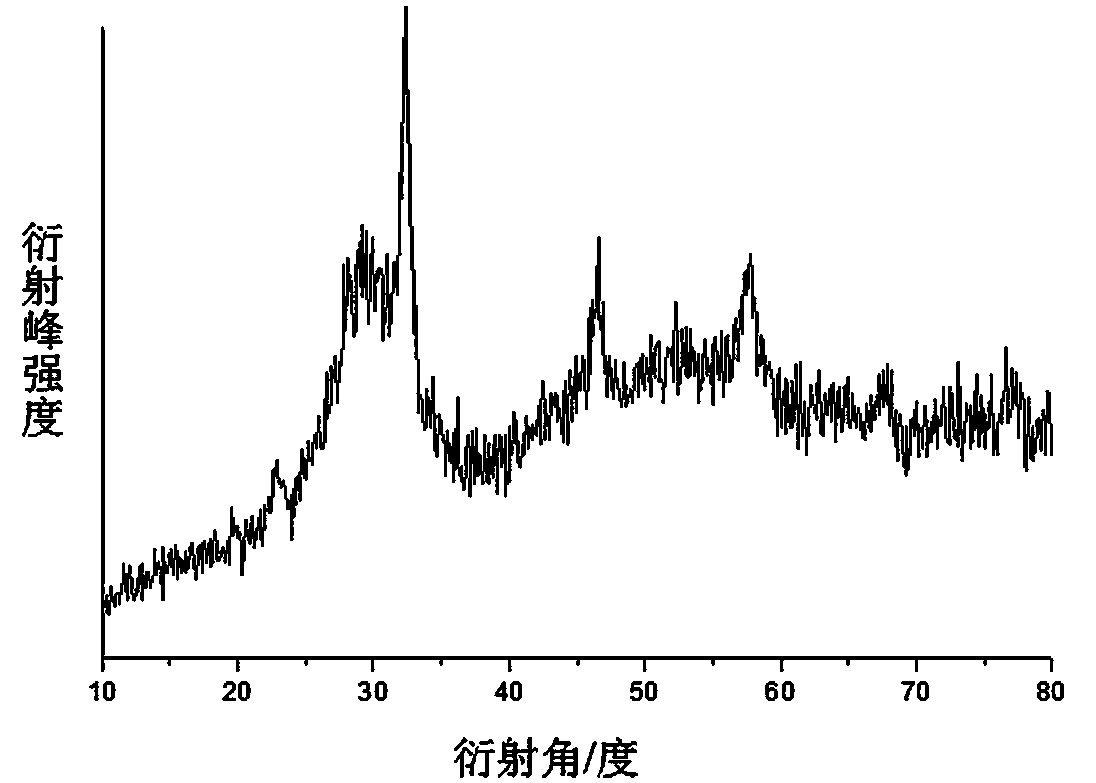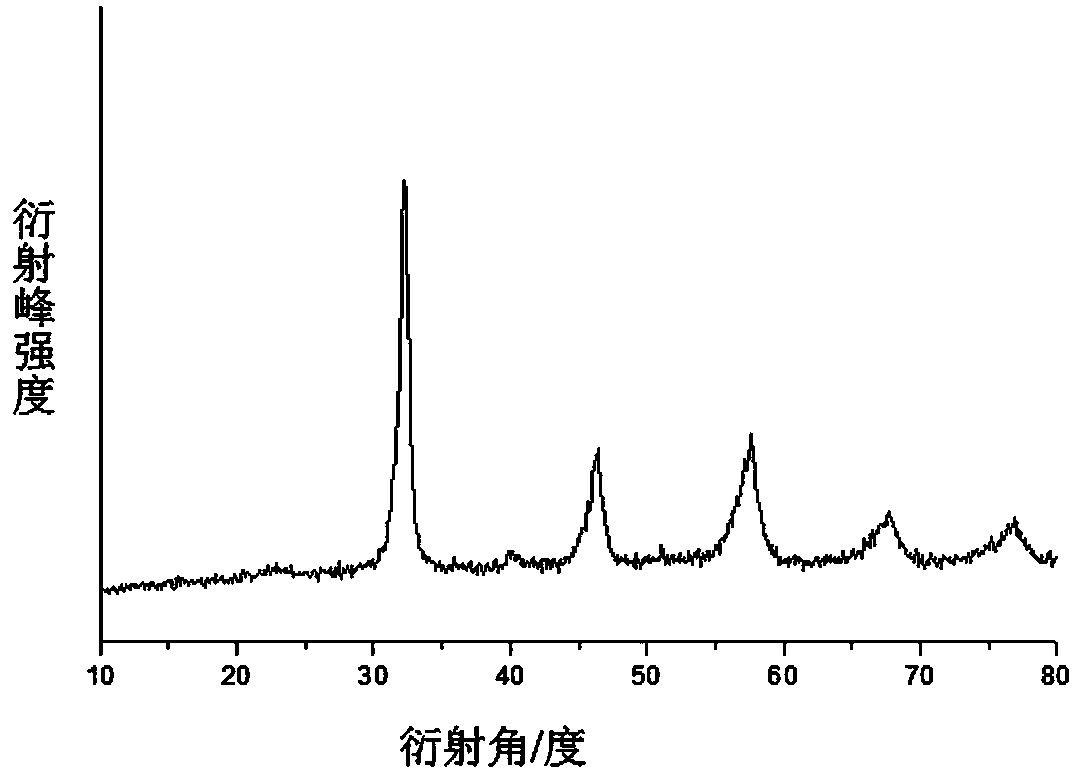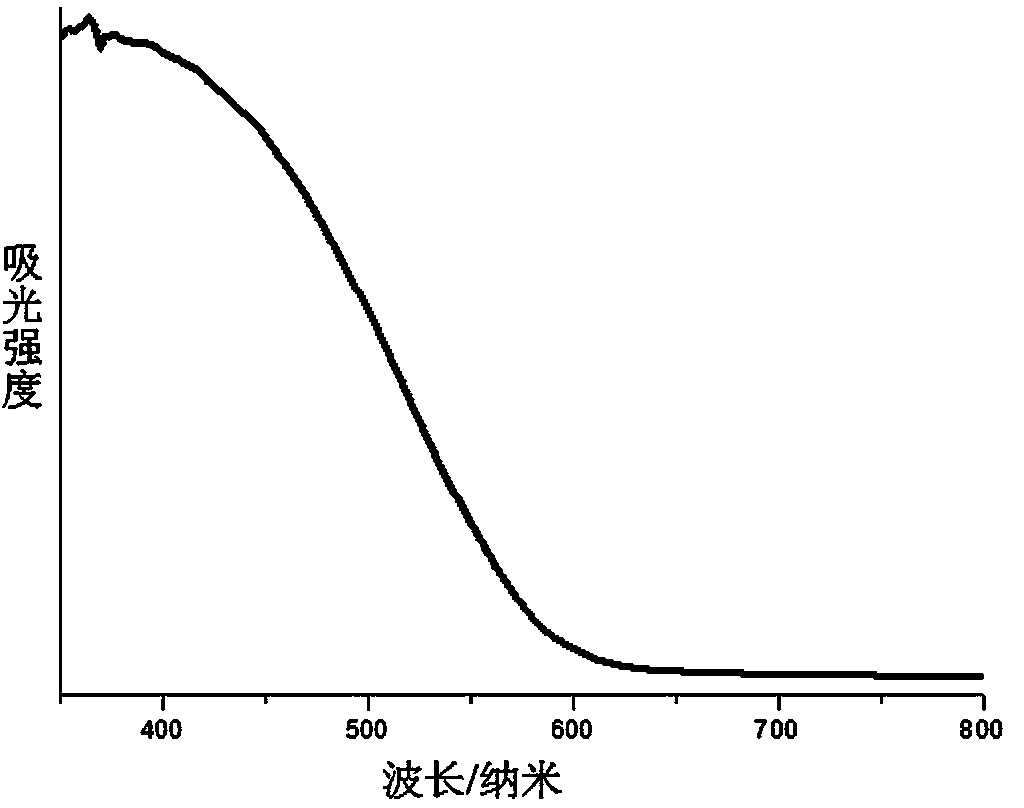Preparation method of SLATON catalyst for catalyzing visual light to decompose water to prepare oxygen
A catalyst and water splitting technology, applied in chemical instruments and methods, physical/chemical process catalysts, hydrogen production, etc., can solve the problem of few transition metal nitrogen oxide photocatalysts, and achieve easy operation control, high purity, The effect of simple process route
- Summary
- Abstract
- Description
- Claims
- Application Information
AI Technical Summary
Problems solved by technology
Method used
Image
Examples
Embodiment 1
[0037] Put strontium chloride, lanthanum chloride, aluminum chloride, tantalum pentachloride and urea in a molar ratio of 1:1:1:1:500, accurately weigh them and put them into methanol aqueous solution (volume ratio of alcohol to water is 1:1) Stir and dissolve in medium for more than 30 minutes. Put the above mixture into a large crucible and put it directly into a muffle furnace. The heating rate of the programmed temperature rise is 10 ℃ / min, the high temperature setting temperature is 800 ℃, and the holding time of the high temperature stage is 4 h. After natural cooling, the obtained Precursor. The precursor is nitrided in an ammonia atmosphere, the nitriding temperature is 850°C, and the time is 6 hours. After cooling, the SLATON powder is obtained. The purity of its products is not less than 99.71%, and the impurity content: carbon is less than 0.11%; chlorine is less than 0.09%. With SLATON as the main catalyst, the co-catalyst CoO is first loaded x , the loadi...
Embodiment 2
[0039] Put strontium nitrate, lanthanum nitrate, aluminum nitrate, tantalum pentachloride and citric acid in a molar ratio of 1:1:1:1:100, accurately weigh them and put them into methanol aqueous solution (alcohol-water volume ratio 1:1) and stir Dissolved for more than 30 minutes. Put the above mixture into a large crucible and put it directly into a muffle furnace. The heating rate of the programmed temperature rise is 10 ℃ / min, the high temperature setting temperature is 800 ℃, and the holding time of the high temperature stage is 4 h. After natural cooling, the obtained Precursor. The precursor is nitrided in an ammonia atmosphere, the nitriding temperature is 850°C, and the time is 6 hours. After cooling, the SLATON powder is obtained. The purity of its products is not less than 99.82%, and the impurity content: carbon is less than 0.13%; chlorine is less than 0.03%. With SLATON as the main catalyst, the co-catalyst CoO is first loaded x , the loading amount is 1...
Embodiment 3
[0041] Put strontium nitrate, lanthanum nitrate, aluminum nitrate, tantalum pentachloride and citric acid in a molar ratio of 1:1:1:1:50, accurately weigh them and put them into methanol aqueous solution (alcohol-water volume ratio 1:1) and stir Dissolved for more than 30 minutes. Put the above mixture into a large crucible and put it directly into a muffle furnace. The heating rate of the programmed temperature rise is 10 ℃ / min, the high temperature setting temperature is 800 ℃, and the holding time of the high temperature stage is 4 h. After natural cooling, the obtained Precursor. The precursor is nitrided in an ammonia atmosphere, the nitriding temperature is 850°C, and the time is 6 hours. After cooling, the SLATON powder is obtained. The purity of its products is not less than 99.86%, and the impurity content: carbon is less than 0.06%; chlorine is less than 0.01%. With SLATON as the main catalyst, the co-catalyst IrO is first loaded 2 , the loading amount is 0....
PUM
 Login to View More
Login to View More Abstract
Description
Claims
Application Information
 Login to View More
Login to View More - R&D
- Intellectual Property
- Life Sciences
- Materials
- Tech Scout
- Unparalleled Data Quality
- Higher Quality Content
- 60% Fewer Hallucinations
Browse by: Latest US Patents, China's latest patents, Technical Efficacy Thesaurus, Application Domain, Technology Topic, Popular Technical Reports.
© 2025 PatSnap. All rights reserved.Legal|Privacy policy|Modern Slavery Act Transparency Statement|Sitemap|About US| Contact US: help@patsnap.com



